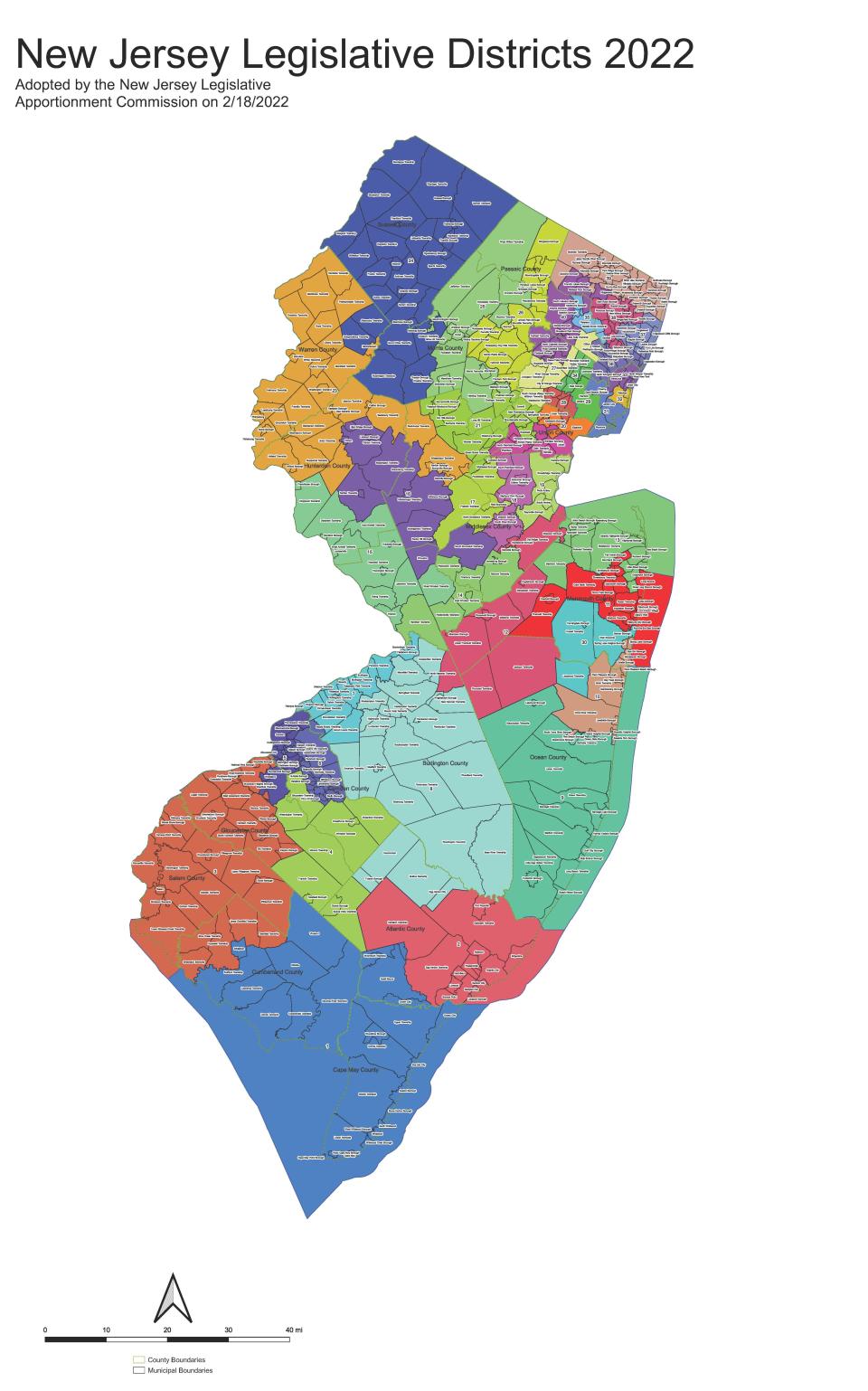What the new NJ legislative districts will look like after historic map compromise
After a week of deliberating, officials have come to a historic compromise on what the state’s legislative districts should look like for the rest of the decade.
For the first time, the Legislative Apportionment Commission came to a bipartisan consensus without needing the 11th committee member to cast a tiebreaking vote. The commission approved the map Friday with nine votes in favor and two votes opposed.
The commission opted to not use either of the maps presented early last week but rather, after two meetings of public comment, created a new map.
The new map will pit high-profile Democratic Senators against each other in multiple primaries and shifts assembly members in multiple districts, though there would be no primary showdowns in those cases.

Longtime rivals and Senate colleagues Nicholas Sacco from North Bergen and Brian Stack from Union City would square off in the restructured District 33 while Sen. Richard Codey, a former governor, would face off with frequent ally Sen. Nia Gill in the new District 27.
A map that pits Sacco and Stack could make for a bruising Democratic primary.
They are popular longtime mayors of their Hudson County towns with considerable organizational support. They hold influence in the Democratic-controlled Legislature, but Stack is particularly powerful as the new chairman of the Judiciary Committee.
Stack currently represents the 33rd legislative district and Sacco the 32nd.
Assemblyman Raj Mukherji has already announced his intent to run for Senate in the 32nd district, saying in a statement Friday afternoon that he has spent his time in the Legislature learning from Stack. The district includes Jersey City and Hoboken.
NJ news: COVID 'stealth variant' detected in NJ as Murphy pushes new booster shot campaign
A primary between Codey and Gill could put the Democratic Party in the delicate position of choosing a white man or a Black woman to back in a primary. Codey, who represents the 27th district as it’s made up now, is the longest-serving lawmaker who served as acting governor and Senate president. Gill, representing the 34th district, is in a leadership position in the Senate.
The 11-member commission is made up of five Democrats, five Republicans and a tiebreaker.
Republican Delegation Chair Al Barlas said the commission was accomplishing historic things “based solely on the fact that our state is diverse and we acknowledged it.” His colleague and longtime friend, Democratic Delegation Chair Leroy Jones, said that the map will provide many opportunities for increased minority representation in some counties while “maintaining or improving on the goals of competitive districts around the state.”
Philip Carchman, who was appointed to serve as the tiebreaking vote by state Supreme Court Chief Justice Stuart Rabner, said both chairs were “strong and fierce advocates for their respective positions.”
He said the map is “not perfect” and will “never be perfect.”
“We will have critics who are focusing on this map and how it affects the next election, 2023, or how it affects something that may happen before that,” Carchman said. “We didn’t design a map for the next few weeks or the next few months or even for the next election. We’re adopting a map for the next decade.”
More: 186,000 New Jerseyans are about to find out they have lead drinking water pipes
Earlier this month, a judge denied former Senate President Stephen Sweeney's bid to return to the state panel. The suit filed by Sweeney in state Superior Court in Mercer County argued that removing him from the panel left South Jersey without representation.
Census data is used to restructure voting districts at all levels of government, and the new congressional map, used to determine federal districts, also made headlines. The state Supreme Court dismissed a Republican challenge to that map, paving the way for new boundaries that are largely expected to protect Democrats in this year's midterm elections.
Democrats hold 10 of the state's 12 seats in the House of Representatives. The new map creates the potential for New Jersey Democrats to maintain a 9-3 advantage over Republicans after the November midterm elections. Overall, Democrats are expected to lose House seats nationwide.
Staff writer Dustin Racioppi contributed to this story.
Katie Sobko is a reporter in the New Jersey Statehouse. For unlimited access to her work covering New Jersey’s governor and political power structure, please subscribe or activate your digital account today.
Email: sobko@northjersey.com
Twitter: @katesobko
This article originally appeared on NorthJersey.com: NJ legislative map approved in historic bipartisan compromise

 money
money 